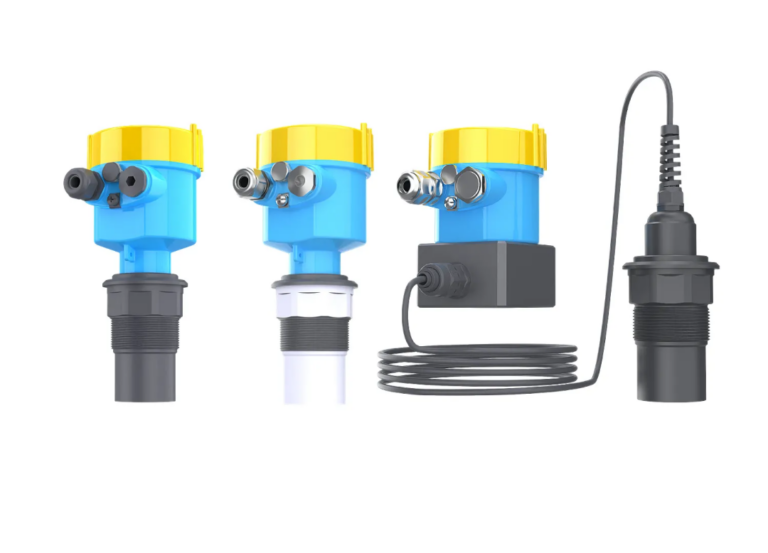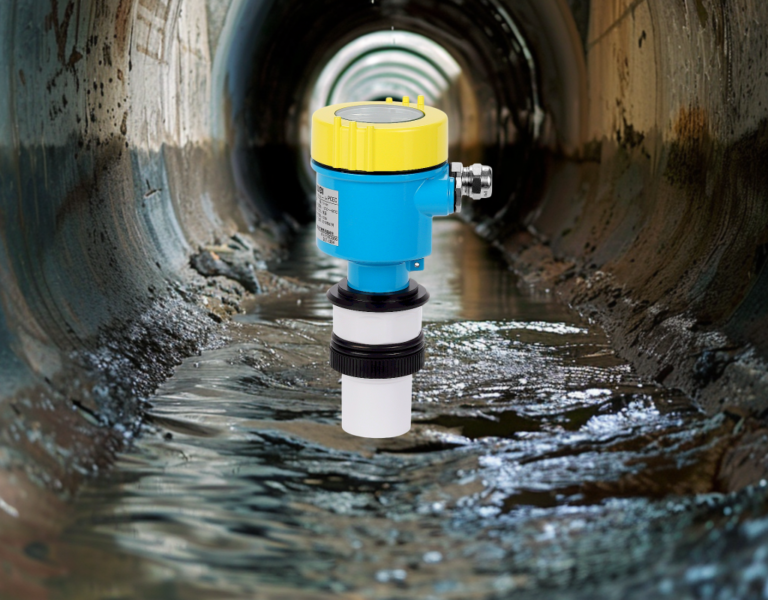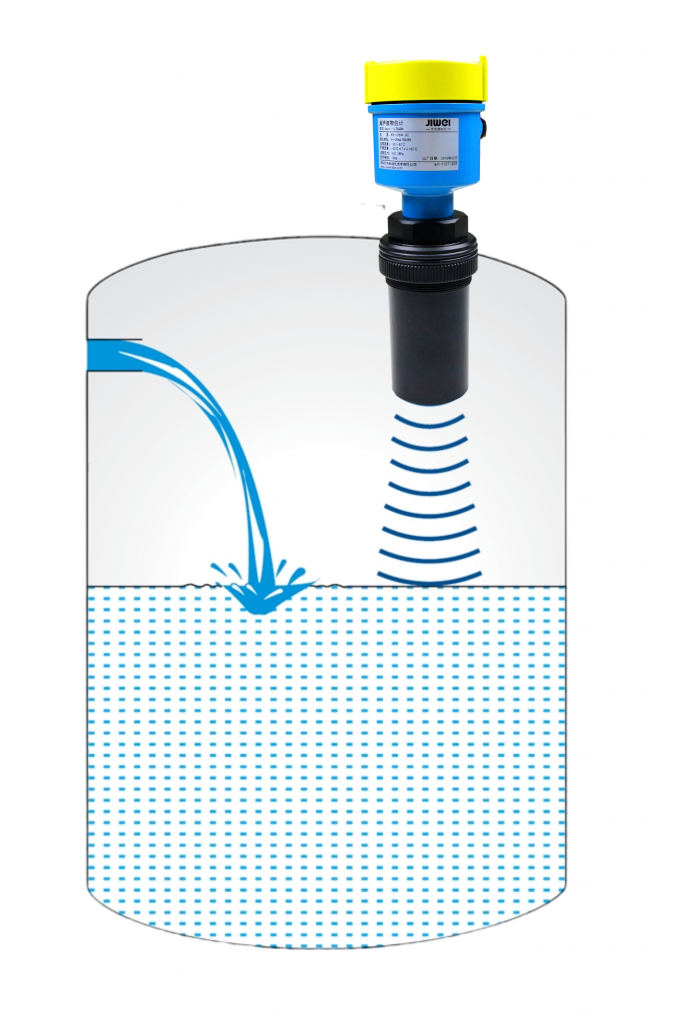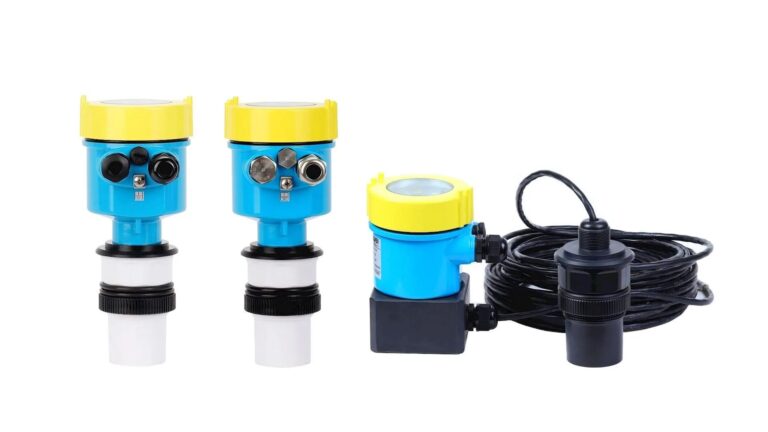Ultrasonic level meters, with their non-contact measurement, high accuracy, and robust environmental adaptability, have emerged as an essential technology for liquid-level monitoring in the chemical industry. This article provides an in-depth exploration of their application scenarios, technical advantages, installation guidelines, and practical case studies.
1. Key Application Scenarios
Storage Tank Liquid-Level Monitoring
Chemical plants extensively use storage tanks to hold liquid raw materials (such as acids, bases, and solvents) and finished products. Ultrasonic level meters offer precise, real-time monitoring, enabling effective inventory management and overflow prevention:
Crude Oil Tanks: Operate reliably under extreme temperatures (-40°C to 150°C) and flammable conditions, maintaining accuracy within ±0.3%.
Corrosive Liquid Tanks: Equipped with corrosion-resistant sensors to withstand strong corrosive substances like sulfuric and hydrochloric acids, avoiding the deterioration commonly faced by mechanical meters.

Reaction Vessels and Separators
Processes such as polymerization and catalytic cracking require precise liquid-level control to ensure reaction efficiency and safety. Ultrasonic level meters, being non-contact, eliminate direct interaction with high temperature, high pressure, or explosive media. They integrate seamlessly with Distributed Control Systems (DCS), supporting automated and accurate control.
Pipeline and Conveyance System Monitoring
In pipelines conveying viscous liquids (e.g., asphalt or resins) or particulate-laden materials, ultrasonic meters are often installed on bypasses or buffer tanks. These meters monitor flow variations and provide early blockage warnings. Advanced anti-interference algorithms effectively filter out disturbances caused by bubbles or suspended solids.
Environmental and Safety Monitoring
Wastewater Treatment: Precise level measurements in sedimentation tanks, even in the presence of foam and sludge, facilitate automated wastewater management.
Leak Detection: In Liquefied Natural Gas (LNG) tanks, ultrasonic level meters equipped with pressure compensation detect abnormal level fluctuations, enabling quick leak prevention.

2. Technical Advantages of Ultrasonic Level Meters
Non-Contact Measurement
Without direct contact with the measured medium, ultrasonic meters eliminate contamination risks, making them ideal for hygienically demanding chemical applications, such as pharmaceutical intermediates or toxic liquids like benzene derivatives.
Robust Environmental Adaptability
Explosion-Proof Design: Certified according to ATEX and IECEx standards, suitable for hazardous, explosive environments such as oil and gas storage facilities.
Temperature Compensation: Built-in PT100 sensors automatically adjust for sound velocity variations between -30°C and 80°C, ensuring consistent accuracy in extreme temperature fluctuations.
Versatility Across Materials and Conditions Ultrasonic meters effectively measure liquids, solids, and slurries:
Powder Storage: Capable of accurately monitoring particulate materials (e.g., polyethylene powders) with precision up to ±5mm.
Mixing Tanks: Reliable measurements even under stirring conditions, unaffected by mechanical vibrations.

3. Installation and Maintenance Best Practices
Installation Guidelines:
Clearance Requirements: Ensure a minimum distance (greater than 10% of the measured range) between sensors and tank walls, with an inclination angle ≤5°.
Avoid Interference Sources: Install meters away from filling points or steam outlets to prevent dust or vapor interference.
Maintenance Strategies:
Regular Cleaning: Wipe sensor surfaces with anhydrous ethanol every six months to prevent scaling and maintain signal integrity.
Calibration Checks: Annually calibrate using standard reference methods to ensure sustained accuracy and long-term reliability.

4. Practical Case Study
A chemical plant adopted split-type ultrasonic level meters (measurement range 15m, accuracy ±0.3%) for highly corrosive liquid storage tanks, integrated with the plant’s SCADA system via RS485/Modbus protocols. Post-installation, leak incidents dropped by 90%, and annual maintenance costs decreased by 20%, demonstrating significant improvements in safety, efficiency, and cost management.
5. Limitations and Mitigation Strategies
While ultrasonic level meters excel in many chemical industry scenarios, certain conditions require careful consideration:
High Steam Environments: Steam can attenuate ultrasonic signals, necessitating the installation of waveguide tubes or switching to radar level meters.
Vacuum Containers: As sound waves cannot propagate in vacuums, alternatives like capacitance or magnetostrictive level meters should be employed.

Conclusion
Ultrasonic level meters, through continuous technological innovation and versatile application compatibility, have become the mainstream solution for level measurement in the chemical industry. Their efficiency, safety, and reliability will continually enhance automated production and safety management practices, solidifying their pivotal role in industrial instrumentation.
